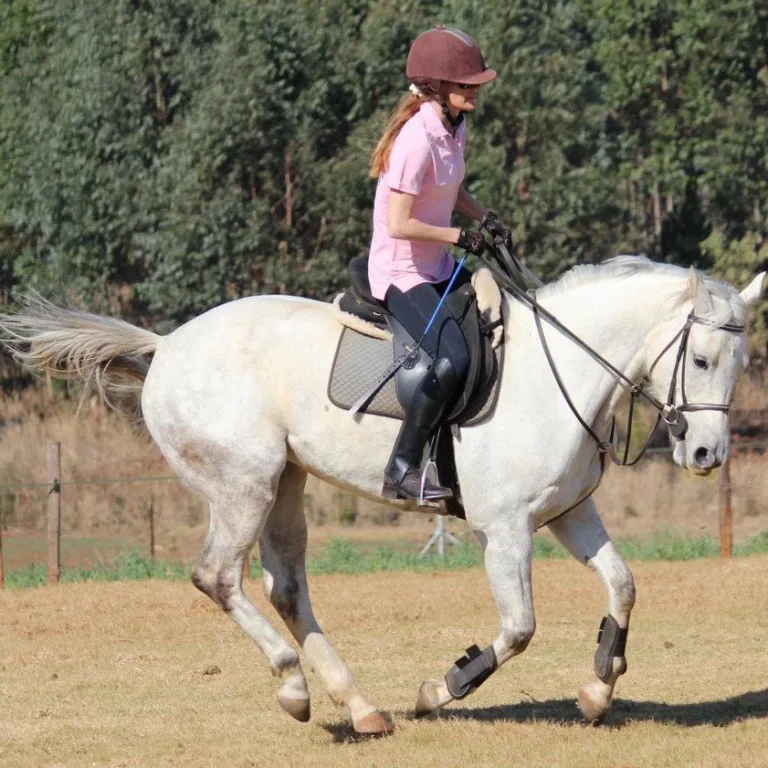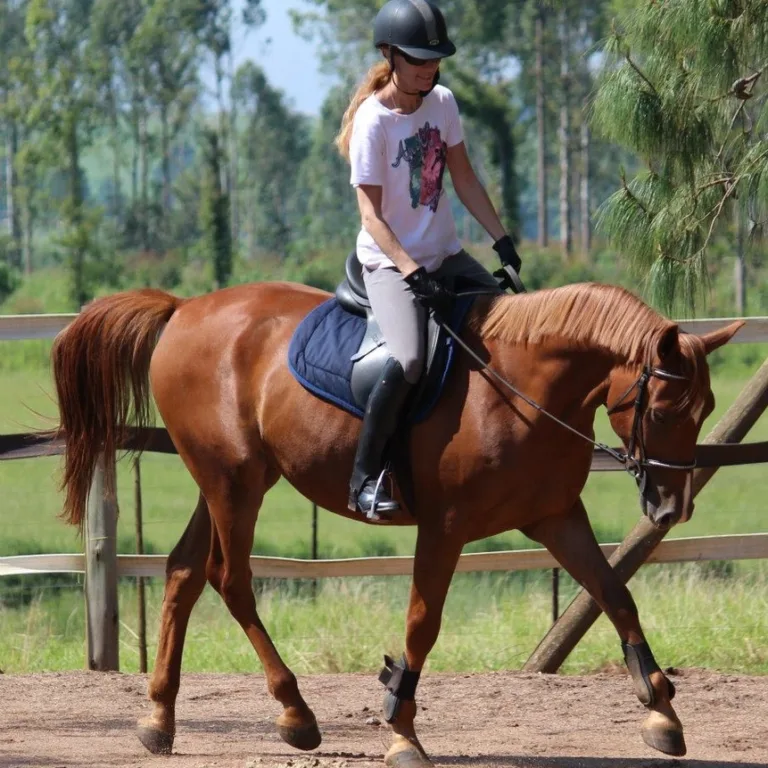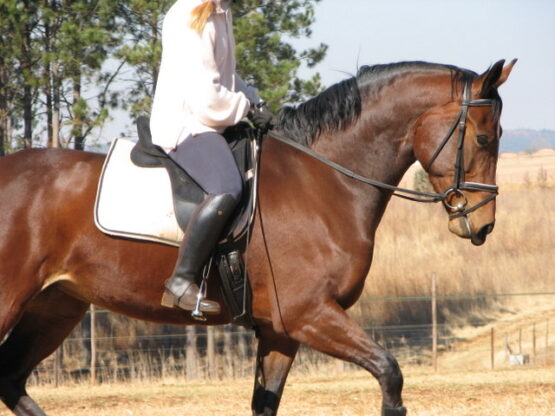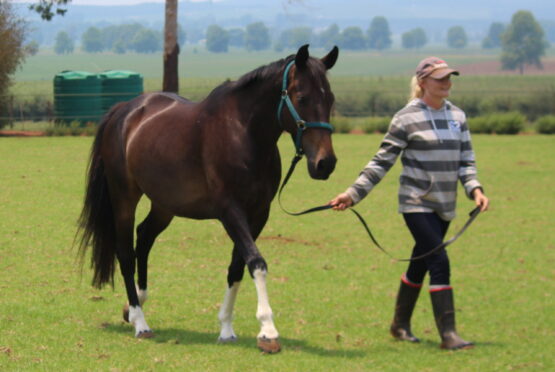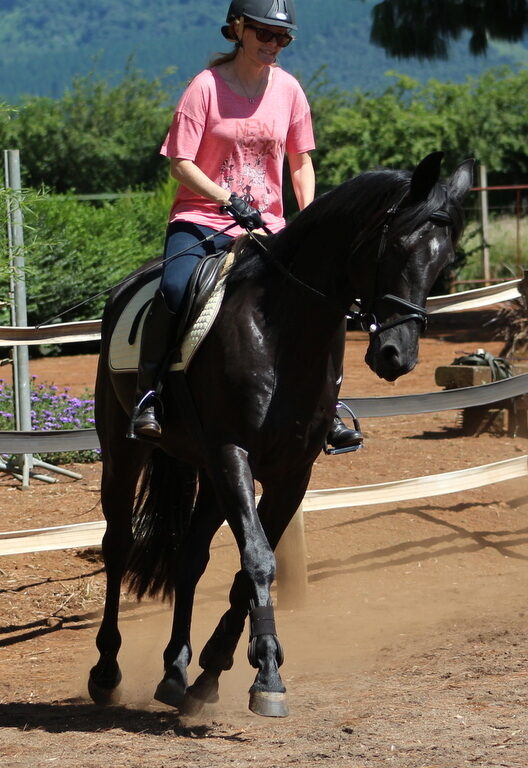From Groundwork to Success: Long-Lining Strategies for Young Horses
Working from the ground is a crucial part of the development and backing of your young horse. Doing correct groundwork lays down the foundation for his future training. It involves exercises done from the ground that helps establish communication, trust, and respect between the handler and the horse. By using correct groundwork, you can establish a strong bond with your equine partner, establish basic obedience, and develop essential skills such as leading, backing up, yielding to pressure, and standing quietly.
Long-lining is a very valuable training technique that expands upon the principles of groundwork. It involves working a horse from the ground using long reins or lines attached to the bit or bridle, allowing for more advanced communication and control. Unlike lunging, where the horse circles around the handler, long-lining allows for greater flexibility and precision in guiding the horse’s movements in a variety of directions. It is an effective tool for teaching and refining a horse’s responsiveness to the aids, developing balance, suppleness, and engagement, and preparing them for under-saddle work.
Long-lining can be extremely beneficial for young horses as it allows them to develop balance, coordination, and responsiveness without the added weight and complexity of a rider.
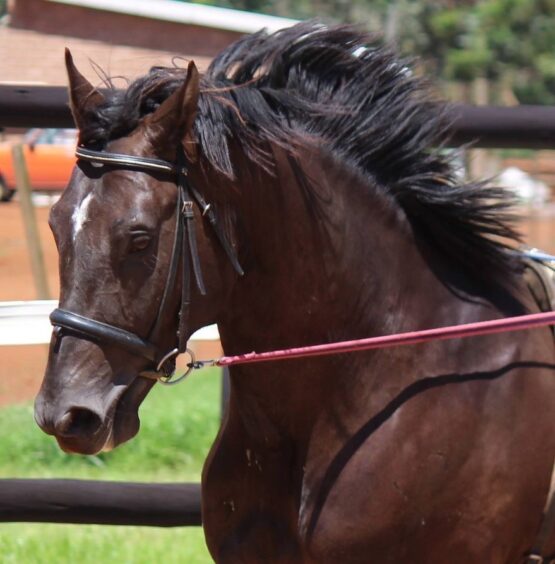
Understanding Long-Lining
Long-lining, also known as double-lunging or ground driving, is a training technique that involves working your horse from the ground using long reins or lunge lines. It provides a means of communication and control between the handler and the horse, simulating the aids and guidance that would typically be given by a rider. The handler stands behind the horse, holding the reins or lines, and guides the horse’s movements in a controlled manner. Long lining allows for more precise and subtle cues, promoting balance, flexibility, and responsiveness than lunging does.
Benefits of long-lining for young horses
Long-lining offers many benefits for young horses in their training and development process. Firstly, it helps them develop their physical coordination, balance, and strength without the added weight of a rider. This allows your horse to focus on their own body and movement, building a solid foundation for future under-saddle work. Secondly, long-lining aids in the development of responsiveness to the aids, as your horse learns to understand and follow the guidance from the reins or lines. It helps refine their understanding of lateral movements, transitions, and collection. Additionally, long-lining promotes mental engagement and attentiveness, helping your young horse become more focused and attentive to their handler’s cues.

Safety precautions and equipment needed for long-lining
Safety is very important when practicing long-lining with young horses. Before starting, ensure that the horse is well-prepared through groundwork and desensitization exercises.
Important safety precautions to consider include:
Use appropriate equipment: Ensure you have a well-fitting surcingle or training roller, a bridle or cavesson, and long reins or lines of appropriate length.
Choose a suitable area: Select a safe and enclosed area with good footing, free from obstacles and distractions.
Start with a helper: It can be helpful to have an experienced person assist you during the initial sessions, providing an extra level of safety and guidance.
Introduce gradually: Begin with short sessions, gradually increasing the duration and difficulty as the horse becomes more comfortable and responsive.
Be aware of surroundings: Pay attention to your surroundings, including other horses or potential hazards, and adjust your plans accordingly.
Use proper hand positioning: Maintain a safe distance from the horse’s hindquarters and position yourself to the side, ensuring you have a clear view of the horse’s movements.
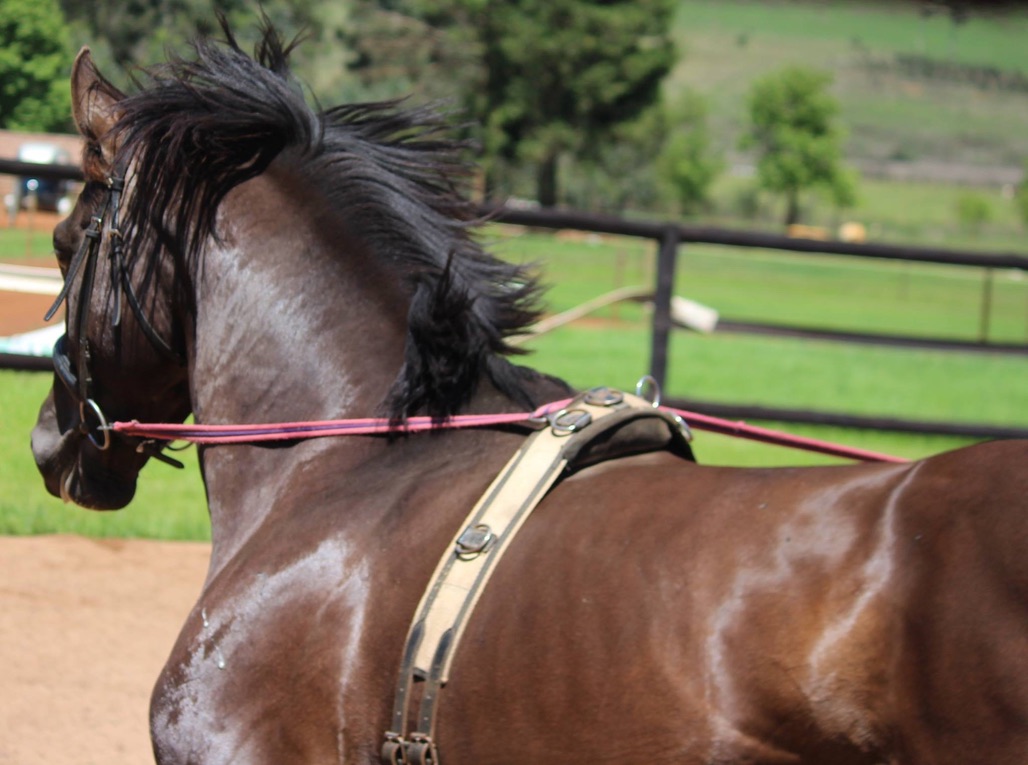
Preparing for Long-Lining
Before introducing long-lining, it is important to establish a solid foundation through groundwork with your young horse. Groundwork exercises such as leading, backing up, yielding to pressure, and desensitization helps build trust, establish boundaries, and develop a respectful relationship between you and your horse. These exercises also familiarize your horse with basic cues and aids, laying the groundwork for effective communication during long-lining sessions. Spend time on the ground working on these exercises until the horse is responsive and attentive.
Developing trust and communication with the young horse
Trust and effective communication are key components of successful long-lining. Spend quality time bonding with your young horse, engaging in activities that promote trust, such as grooming, handling, and spending time in their presence. Develop clear and consistent cues that your horse can understand, using voice commands, body language, and light pressure from your hands on the reins or lines. Building a foundation of trust and effective communication will create a strong partnership between you and the horse, enhancing the success of your long-lining sessions.
Introducing the long-lining equipment and desensitization exercises
Introduce the long-lining equipment gradually and ensure the young horse is comfortable with it. Start by desensitizing the horse to the surcingle or training roller, allowing them to sniff, touch, and wear it gradually. Progress to attaching the reins or lines to the bit or bridle, ensuring they are correctly adjusted and not too restrictive or loose. Perform desensitization exercises with the equipment, such as gently moving the reins or lines over the horse’s body and legs, helping them become accustomed to the feel and movement.
Incorporate desensitization exercises that mimic the movement and sounds associated with long-lining. An example is introducing the sound of the lines dragging on the ground and gradually progressing to gently touching the horse’s hindquarters and hind legs with the lines. These exercises help the horse become desensitized to the sensations they will experience during the actual long-lining sessions, reducing anxiety or resistance.
By establishing a solid groundwork foundation, creating trust and clear communication, and gradually introducing the long-lining equipment through desensitization exercises, you can ensure that your young horse is well-prepared and receptive to the long-lining training technique.
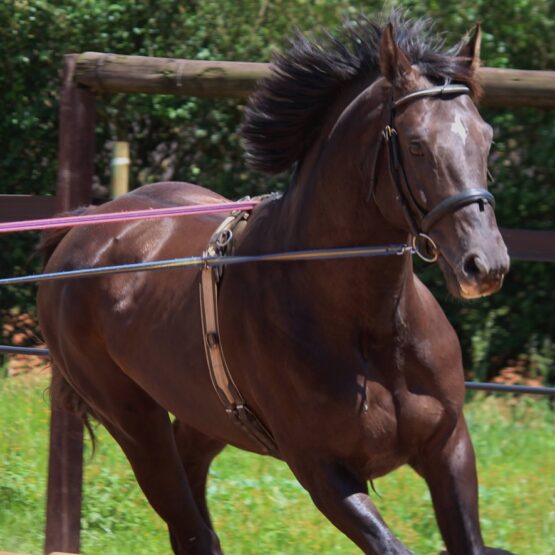
Step-by-Step Long-Lining Strategies
Choosing an appropriate location and setting up a safe area: Select a suitable location for your long-lining sessions. Ideally, choose a spacious, enclosed area such as a round pen or arena where the young horse can move freely without distractions or potential hazards. Ensure the footing is safe and free from any obstacles that may pose a risk.
Familiarizing the young horse with the long lines and surcingle: Begin by introducing the young horse to the long lines and surcingle. Allow them to sniff and investigate the equipment, ensuring they are comfortable with its presence. Gradually introduce the surcingle by gently placing it on their back, and adjusting it to fit properly. Give the horse time to adjust and move around freely while wearing the surcingle until they become accustomed to its feel.
Teaching the horse to move forward, halt, and steer from the ground: Start by teaching the horse basic cues from the ground. Stand to the side of the horse and use the reins or lines to ask them to move forward. Apply light, steady pressure, and release as soon as the horse takes a step forward. Reward and praise the horse for its response. Practice asking for halts by using gentle pressure and releasing when the horse stops. Gradually introduce steering cues by using light pressure on the reins or lines in the desired direction.
Begin with simple straight lines and gradually progress to larger circles or figure-eight patterns. Focus on clarity and consistency in your cues, rewarding the horse for correct responses. Use verbal commands such as “walk-on” or “whoa” to reinforce the aids.
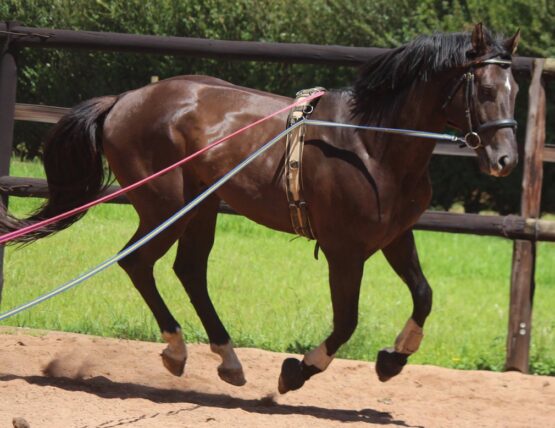
Progressing to Advanced Exercises
Introducing lateral movements and bending exercises
Once your young horse is comfortable with the basic long-lining exercises, you can begin introducing lateral movements and bending exercises. Begin by asking the horse to yield its hindquarters and shoulders, encouraging them to step sideways. Gradually introduce more advanced lateral movements such as leg yield or shoulder-in, using the reins or lines to guide and support their movement. Focus on maintaining balance, rhythm, and relaxation throughout these exercises. Incorporate bending exercises such as serpentines or figure-eights to encourage suppleness and flexibility. Ask the horse to bend through its body as they navigate the patterns, maintaining light contact on the reins or lines to guide its flexion and maintain a consistent connection.
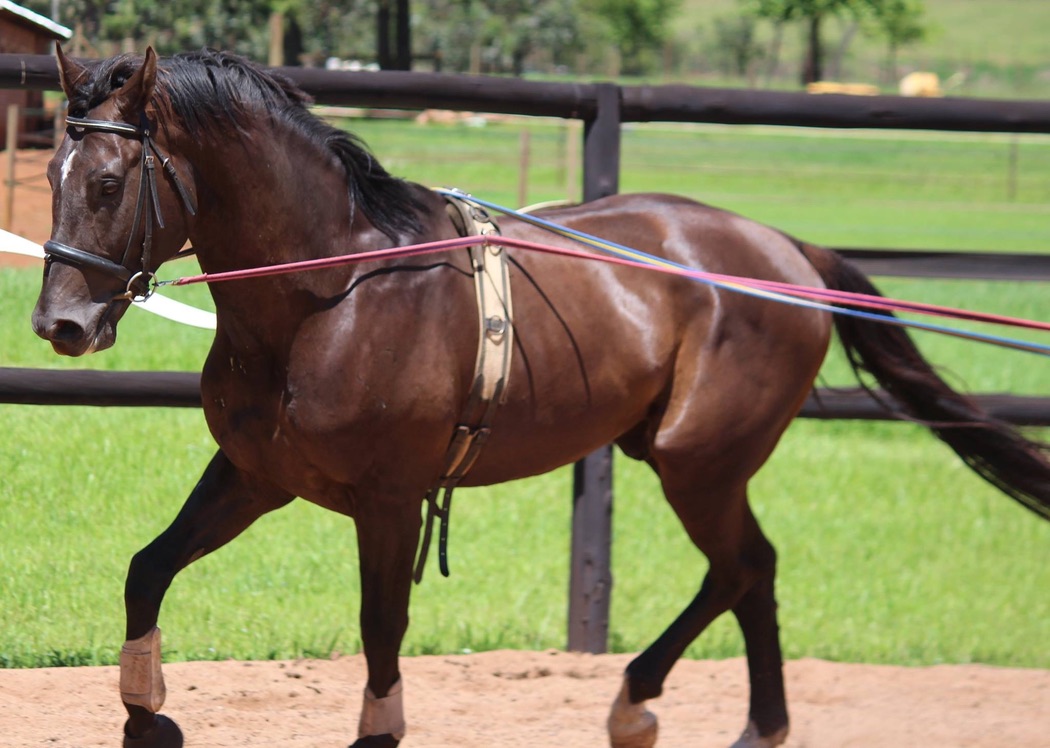
Encouraging your young horse to accept contact and work in a frame
As the young horse progresses, begin to encourage them to accept contact and work in a balanced frame. Apply light, steady contact on the reins or lines, asking the horse to seek the connection and work into a soft, round outline. Encourage the horse to engage its hindquarters and lift its back, developing strength and self-carriage. Reinforce the importance of relaxation and suppleness as the horse learns to carry itself in a frame. It’s essential to be sensitive to the horse’s individual conformation and build, adjusting the contact and frame expectations accordingly. Aim for a light and elastic contact, avoiding any force or tension in the horse’s mouth.
Developing transitions and changes of direction
Transitions and changes of direction help develop responsiveness, balance, and adjustability in your young horse. Practice smooth transitions between gaits, focusing on maintaining rhythm and straightness throughout. Use clear aids and consistent rein contact to guide your horse through the transitions, encouraging him to remain attentive and balanced. Use changes of direction, such as circles, serpentines, or squares, to further challenge your horse’s coordination and responsiveness. Focus on maintaining an even bend and balance throughout the changes of direction, adjusting the rein contact and body position as needed.
By progressively introducing lateral movements, bending exercises, encouraging acceptance of contact and work in a frame, and developing transitions and changes of direction, you can build on the foundation established through basic long-lining exercises. These advanced exercises enhance your young horse’s suppleness, balance, responsiveness, and overall development, preparing him for further training under saddle. Remember to always consider your horse’s individual abilities and progress at a pace that allows for confidence and understanding.
Dealing with resistance or fear during long-lining sessions
Resistance or fear can arise during long-lining sessions, especially in young or inexperienced horses. If your horse displays resistance, such as backing up, rushing, or refusing to move forward, it’s important to address the underlying cause. Take a step back and assess the situation. Evaluate your horse’s comfort level with the equipment, environment, or specific exercises you are asking of him.
If fear is the issue, focus on building your horse’s confidence gradually. Break down the exercises into smaller, more manageable steps, allowing him to understand and accept each stage before progressing further. Provide reassurance, use positive reinforcement, and reward small victories to build trust and encourage a positive association with the long-lining process. Patience, consistency, and understanding will help overcome resistance or fear.
Addressing tension, stiffness, or evasions in the horse’s movement
If the horse displays tension, stiffness, or evasions in their movement during long-lining, it is important to address these issues promptly. These challenges may arise due to physical discomfort, lack of understanding, or resistance to the aids. Begin by evaluating your horse’s physical well-being. Ensure there are no underlying issues such as pain or discomfort that may be contributing to his behavior. Consult with a veterinarian or equine professional if necessary.
If the tension or stiffness persists, focus on exercises that promote relaxation and suppleness. Incorporate frequent transitions, changes of direction, and bending exercises to encourage the horse to loosen its muscles and joints. Use your aids and rein contact sensitively, seeking a soft and elastic connection.
If your horse consistently evades or resists certain movements, take a step back and break down the exercise into smaller, more manageable parts. Focus on building his understanding and confidence gradually, rewarding their efforts along the way. Seek guidance from an experienced trainer if you encounter persistent challenges.
Adjusting the training plan according to your horse’s individual needs
Every horse is unique, and their progress in long-lining will vary. It’s essential to adjust the training plan according to your horse’s individual needs and abilities. Monitor his physical and mental responses during each session, paying attention to signs of fatigue, confusion, or stress. Be flexible in your approach, adapting the exercises, duration, and intensity based on your horse’s progress and well-being.
Some horses may require more time to grasp certain concepts or develop physical strength, while others may progress more quickly. Tailor the training plan to suit your horse’s specific needs, allowing for sufficient time for rest, recovery, and consolidation of his learning. Regularly assess and reassess your horse’s overall development and adjust the training plan accordingly. Seek professional guidance if needed to ensure you are providing the best possible support for your horse’s individual journey.
By effectively troubleshooting and addressing common challenges and setbacks in long-lining, you can overcome resistance, promote relaxation and suppleness, and tailor the training plan to suit your horse’s individual needs. This approach fosters a positive and progressive training experience, allowing your young horse to develop into a confident and responsive partner.
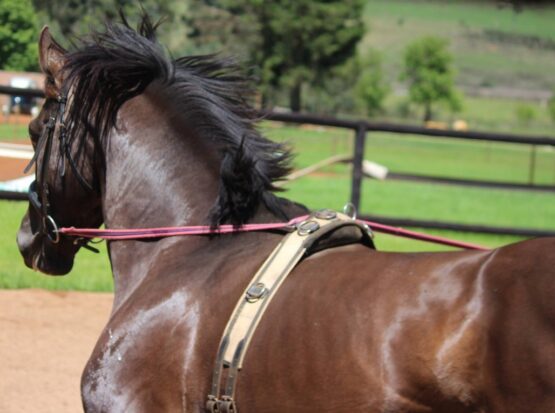
Incorporating Long-Lining into a Comprehensive Training Program
Complementing long-lining with other training techniques (e.g., lunging, riding)
Long-lining can be a valuable addition to a comprehensive training program when combined with other training techniques. Incorporating lunging sessions can help the horse further develop its balance, rhythm, and responsiveness. Lunging allows for controlled exercise and can be used to reinforce and expand upon the lessons learned during long-lining.
Riding should also be integrated into the training program to advance the horse’s education under saddle. Long-lining serves as a bridge between groundwork and ridden work, helping the horse understand and respond to cues in a controlled environment. Transitioning from long-lining to riding allows the horse to transfer their understanding of the aids from the ground to the rider’s aids.
Integrating long-lining exercises to improve specific skills (e.g., collection, balance)
Long-lining provides an excellent opportunity to improve specific skills such as collection, balance, and suppleness. Through long-lining exercises, you can encourage the horse to engage its hindquarters, lift its back, and develop a more uphill and balanced way of going.
Incorporate exercises that promote collection, such as transitions within and between gaits, half-halts, and exercises that encourage the horse to shift its weight onto its hindquarters. Use the reins or lines to support the horse’s balance and encourage them to work from behind. Gradually increase the difficulty of the exercises as the horse progresses, always considering their individual capabilities and limitations.
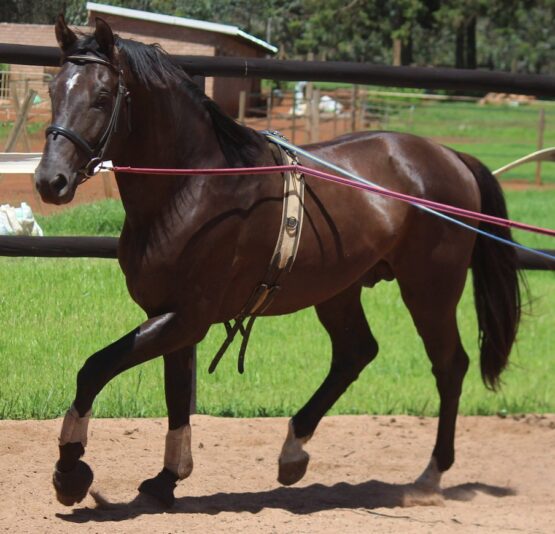
Balancing the use of long-lining with rest days and variety in the horse’s routine
While long-lining is a valuable training technique, it’s essential to maintain a balanced approach to your horse’s overall routine. Avoid overworking your horse solely on long-lines and ensure he has regular rest days to recover and recharge.
Incorporate variety into your horse’s training program by including other activities such as turnout, trail rides, or light hacking. This not only provides mental and physical stimulation but also helps prevent boredom and burnout. A well-rounded routine that includes a mix of training, rest, and varied activities will promote your horse’s overall well-being and enthusiasm for his work.
By complementing long-lining with other training techniques, integrating exercises to improve specific skills, and balancing the use of long-lining with rest days and variety, you can create a comprehensive training program that maximizes the benefits of long-lining while promoting your horse’s overall development and happiness. Remember to regularly assess your horse’s progress and adjust the program as needed to ensure their continued growth and enjoyment.
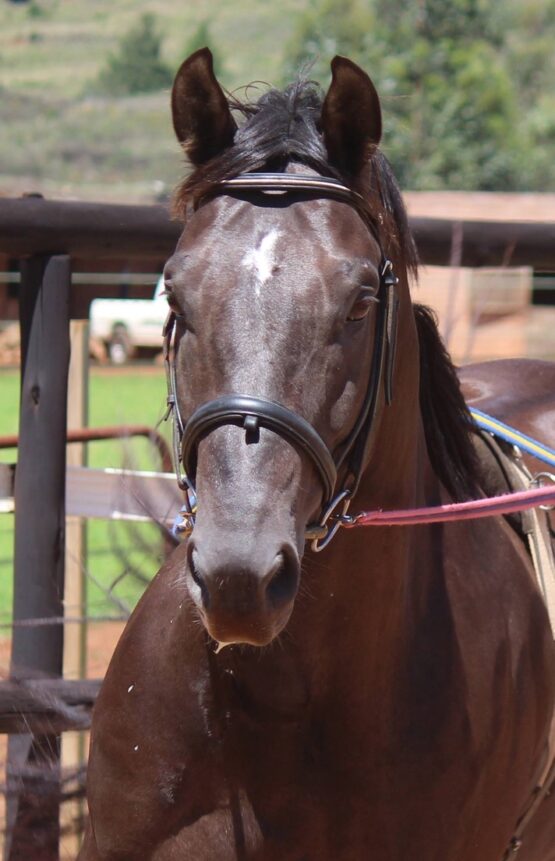
In Conclusion
Long-lining is a valuable training technique that plays a crucial role in the development of young horses. By engaging in long-lining sessions, young horses can experience numerous benefits such as improved balance, suppleness, responsiveness, and overall physical and mental development.
As you embark on your long-lining journey with your young horse, it’s essential to approach the training with patience and consistency. Remember that every horse is unique and will progress at his own pace. Apply the outlined strategies from establishing a solid foundation through groundwork to progressing to advanced exercises, and troubleshooting common challenges. Be patient with your horse’s learning process and consistent in your approach to foster trust, understanding, and progress.
Long-lining provides a rewarding journey for both horse and handler. It offers an opportunity to establish a strong foundation, build trust, and develop the necessary skills for future success. Through the journey from groundwork to success, you will witness the transformation of a young horse, as they gain strength, coordination, and confidence. Embrace the process, celebrate each milestone, and appreciate the bond that grows between you and your equine partner.
By recognizing the importance and benefits of long-lining, applying the outlined strategies with patience and consistency, and embracing the rewarding journey from groundwork to success, you are well-equipped to embark on your long-lining adventure with young horses. Remember to always prioritize the horse’s well-being, tailor the training to their individual needs, and seek professional guidance when necessary.
Enjoy the journey and the progress that unfolds as you guide your young horse toward a successful future.
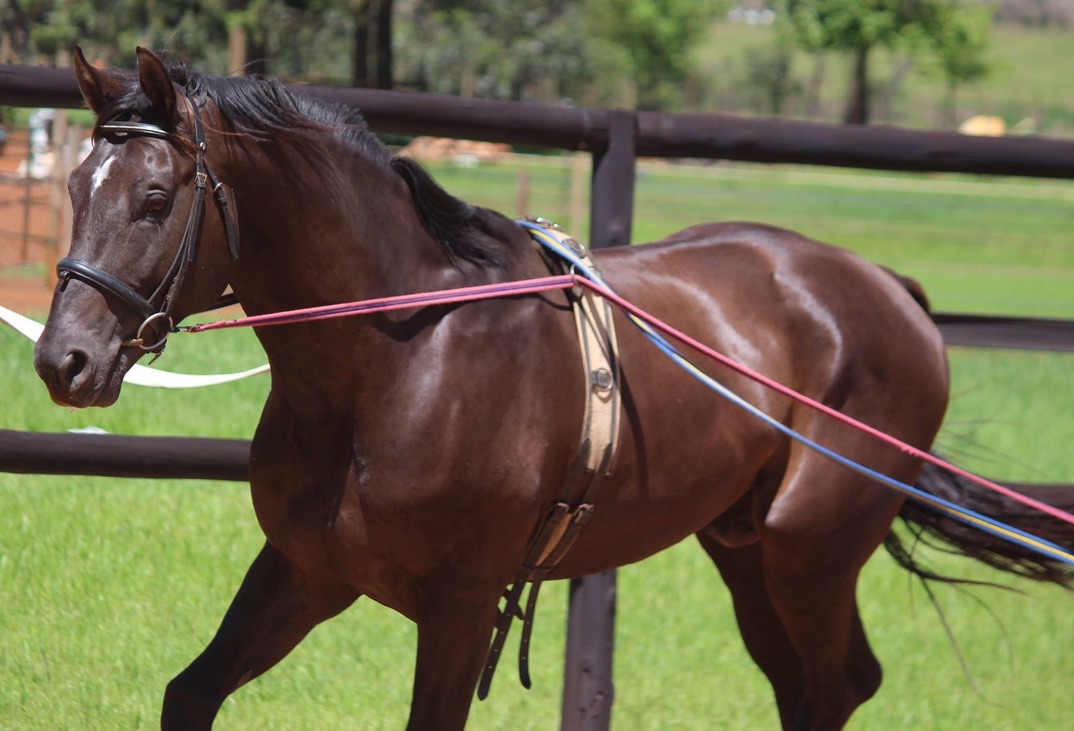
FAQ
more reading
Long-Lining for all Ages and Stages — Long–lining, also referred to as line- or ground-driving, is an extremely beneficial exercise for horses at all stages of development.
Tips for long lining your horse — Long–lining has many benefits for you and your horse, including increased communication, trust, overall confidence and training.



